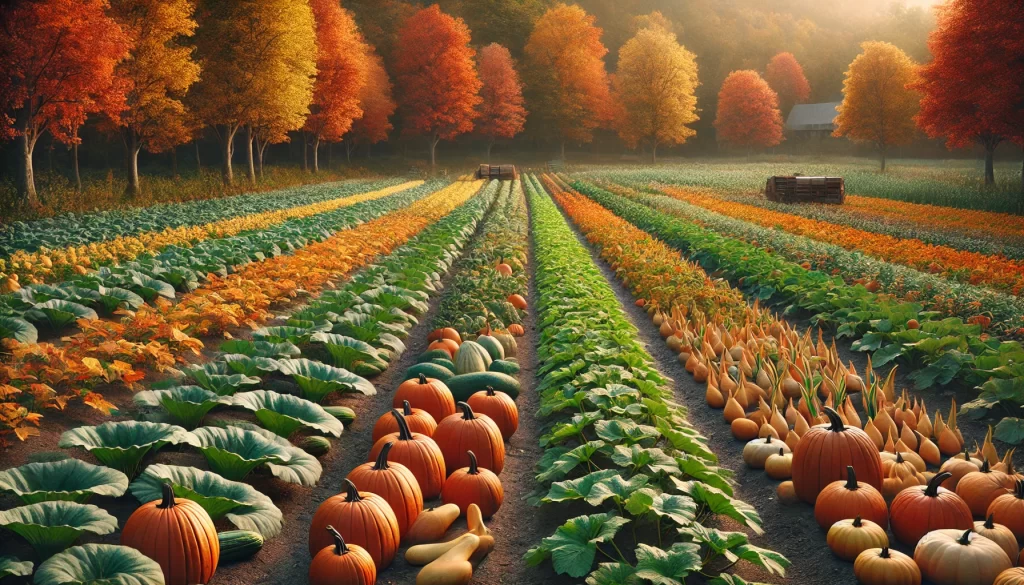The Seasons and Their Role in Agriculture (Part 4: Autumn)
Autumn marks the transition between summer and winter, characterized by temperatures that begin to drop and days that shorten. This season represents a time of preparation for many farmers, as the soil still retains the summer heat, which favors the germination of certain crops. In this fourth and final part, we explore how autumn affects agriculture and what practices can help farmers maximize their yields in this season.

Autumn: Soil Preparation and Cultivation Opportunities
During autumn, temperatures are cooler, and rainfall tends to increase in some regions, creating favorable conditions for planting crops that require a growth period in moderate climates. Additionally, it is a good time to prepare the soil and improve its fertility before winter.
Climatic Features of Autumn
- Temperature: Descending, with gradual changes between day and night.
- Precipitation: Usually increases, especially in areas with temperate climates.
- Sunlight: Gradually decreases, affecting photosynthesis and the development of certain crops.
Recommended Crops for Autumn
Autumn is ideal for planting vegetables and other crops that grow well in moderate temperatures and will be ready for harvest in winter or early spring.
Autumn Vegetables
- Broccoli
- Cauliflower
- Lettuce
- Spinach
Root Crops
- Carrots
- Beets
- Turnips
Legumes
- Lentils
- Beans

These crops can benefit from the autumn climate as the moderate temperatures help reduce thermal stress, allowing for healthy growth.
Fertilization Practices in Autumn
Autumn is an excellent season to enrich the soil before planting or to apply nutrients to growing crops. Below is a table with the recommended fertilization doses for some autumn crops:
| Crop | Main Nutrient | Recommended Dose | Application Method |
|---|---|---|---|
| Broccoli | Nitrogen | 50 kg/ha | Applied in the furrow |
| Lettuce | Phosphorus and Potassium | 40 kg/ha | Incorporated into the soil |
| Spinach | Nitrogen | 45 kg/ha | Applied during growth |
| Carrot | Potassium | 35 kg/ha | Applied during early stages |
| Lentils | Phosphorus | 25 kg/ha | Applied during planting |
Soil Preparation and Tilling in Autumn
Soil preparation in autumn is crucial to improve its structure and ensure good water and nutrient retention. Some recommended practices include:
- Shallow tilling: Improves aeration and prevents soil compaction.
- Incorporating compost or green manure: Increases organic matter content and enriches the soil with nutrients.
- Mulching: Helps conserve moisture and protects the soil from drastic temperature changes.

Irrigation Management in Autumn
With autumn rains, irrigation can be reduced, but it is important to monitor soil moisture to avoid saturation. Irrigation should be adapted to the climatic conditions of each region, using methods such as drip irrigation, which provides water efficiently and in a controlled manner.
Pest and Disease Control in Autumn
In autumn, some pests and diseases may thrive due to the humidity. To prevent damage to crops, it is recommended to:
- Crop rotation: Reduces the buildup of pests and pathogens specific to certain crops.
- Constant monitoring: Allows for quick detection of any pests or diseases and early intervention.
- Biological control: Use beneficial insects and traps to reduce pest populations.
Autumn is a transitional season that offers farmers the opportunity to prepare their land and plant cold-resistant crops. By taking advantage of favorable conditions and employing proper fertilization and soil protection practices, farmers can maximize their crop yields during this season.
 AgronoBlog – Agriculture Blog
AgronoBlog – Agriculture Blog